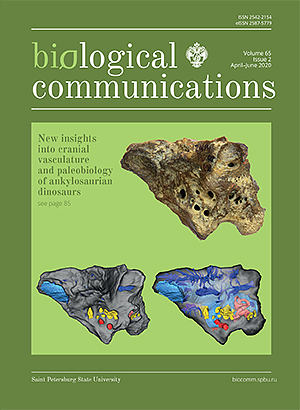Publication-based analysis of miR-210 dependent biomarkers of pre-eclampsia
DOI:
https://doi.org/10.21638/spbu03.2020.203Abstract
MicroRNAs (miRNAs) are potential biomarkers of most pregnancy complications. In recent years, miR-210 has been shown as one of the main biomarkers, detected at different stages of pregnancy and associated with various diseases, including pre-eclampsia (PE). However, miR-210 is not reported as a marker of PE in about half of the studies. We filtered available published RNA-seq data and miRNAs associated with PE, including or excluding miR-210, obtained from the PregMiR database. For further analysis we only considered miRNAs appearing in at least four different studies. We observed that miR-152, miR-1 and miR-193b were only detected in studies with a changed miR-210 level, whereas miR-27a, miR-29a, miR-130a and miR-519b were detected in studies without miRNA-210 differential expression. Common biomarkers of PE are miR-182, miR-126, miR-155, miR-181a, miR-18a, miR-195, miR-21, miR-223, miR-335, miR-517c, miR-518b, miR-518e and let-7f. Based on the obtained data and taking into account the direction of differential miRNA expression, it can be assumed that the most likely mechanisms of PE development in the early pregnancy stage are either upregulation of miR-210, miR-152, miR-518b and downregulation of miR-126; or upregulation of miR-126 and downregulation of miR-182 and miR-518b. Late stages of PE are determined by miR-210, miR-152, miR-518b, miR-21, miR-155, miR-181a, miR-182, miR-193b-3p, miR-517c, miR-518e (upregulation) and miR-126, miR-18a, miR-195, miR-223, let-7f (downregulation); or miR-27a, miR-29a, miR-130a and miR-519d, miR-517c, miR-518e miR-155, miR-126, miR-181a, miR-195 (upregulation) and miR-223, miR-18a, miR-182 (downregulation). The presented results allow speculation about the influence of certain miRNAs on PE development in the context of the presence or absence of miR-210 differential expression, but additional experimental studies are required to evaluate the findings.
Keywords:
miRNA, pregnancy complications, miR-210, pre-eclampsia, bioinformatics analysis
Downloads
References
Downloads
Published
How to Cite
License
Articles of Biological Communications are open access distributed under the terms of the License Agreement with Saint Petersburg State University, which permits to the authors unrestricted distribution and self-archiving free of charge.





